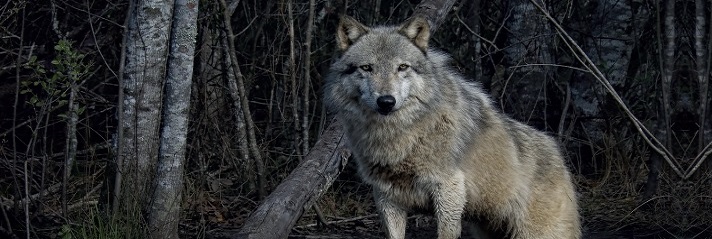by Dr Robert McKay and Dr John Miller, editors of Werewolves, Wolves and the Gothic
The werewolf is the least tracked of the three cardinal species of monster, overshadowed in the moonlight by vampires and the recent zombie hordes. We have learned that such figures offer (as David Punter writes of the Gothic) ‘a very intense, if displaced, engagement with political and social problems’.[1] It is critical cliché that Dracula takes a bite into anxieties of gender and sexuality or that contemporary zombies are bandaged up with zombie capitalism.
There are comparable lessons to be learned about werewolves. Like these other monsters, werewolves develop from their own fascinating prehistory, loping through folklore and medieval romances where the main lineaments of the werewolf are established — shapeshifting, contagion and violent desire. These facets undergo a gradual metamorphosis in nineteenth and early- twentieth-century narratives, shifting into the fully transformed Gothic character-trope of 1930s and 1940s Hollywood to be born again in millennial fiction and film.
Throughout its evolution, the werewolf has embodied anxieties. Werewolves, Wolves and the Gothic analyses the sheer breadth of that process, and the motility of the werewolf trope in it. The volume includes chapters on patriarchal fears about paternity; about Edwardian feminism and late twentieth-century ‘Girl Power’; about cultural and racial miscegenation and about vanishing American Indians.
But there is something specific to the werewolf that distinguishes it from other monsters. Those figures are supernatural forces with no obvious ‘real’ counterparts. The werewolf contrastingly depicts the animality of humanity itself – man as wolf to man, as the saying goes – through a demonization of actual animals: wolves. If your monsters self-evidently exist in the realm of fantasy it seems fair to read through them to the displaced human social problems behind. When your monster’s existence is real, then that critical manoeuvre misses something crucial. This twist in the logic of monstrosity prompts its own transformation at the heart of our book, from reading the werewolf as exemplary of ‘social anxieties’ to finding it to be the epitome of ‘species troubles’: in ecocides, in Edwardian homophobic mores undone by celebrations of creatureliness, and in anarchist vegetarian werewolves marauding the streets of Paris. Werewolf stories are always about more than the human.
Robert McKay is Senior Lecturer in English Literature at the University of Sheffield; John Miller is Senior Lecturer in Nineteenth-Century Literature at the University of Sheffield.
If you would like to buy Werewolves, Wolves and the Gothic, please follow this link: http://www.uwp.co.uk/book/werewolves-wolves-and-the-gothic-hardback


